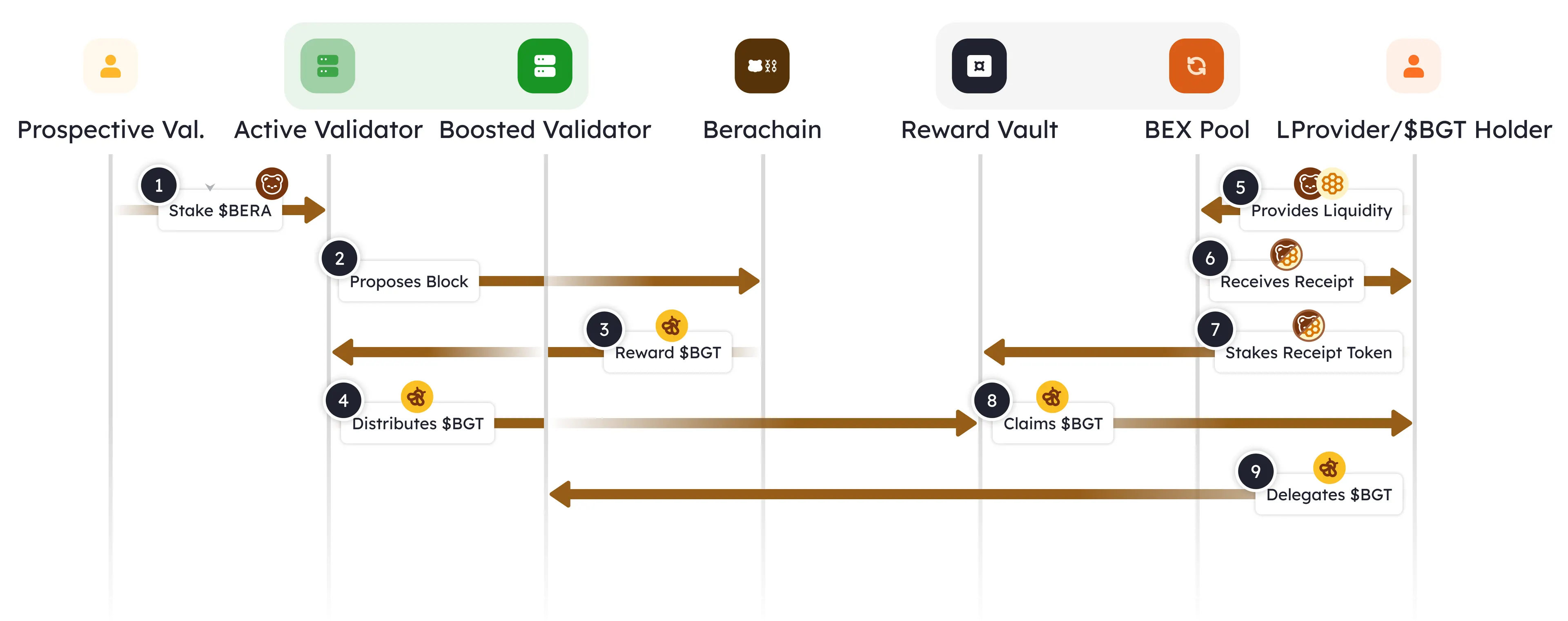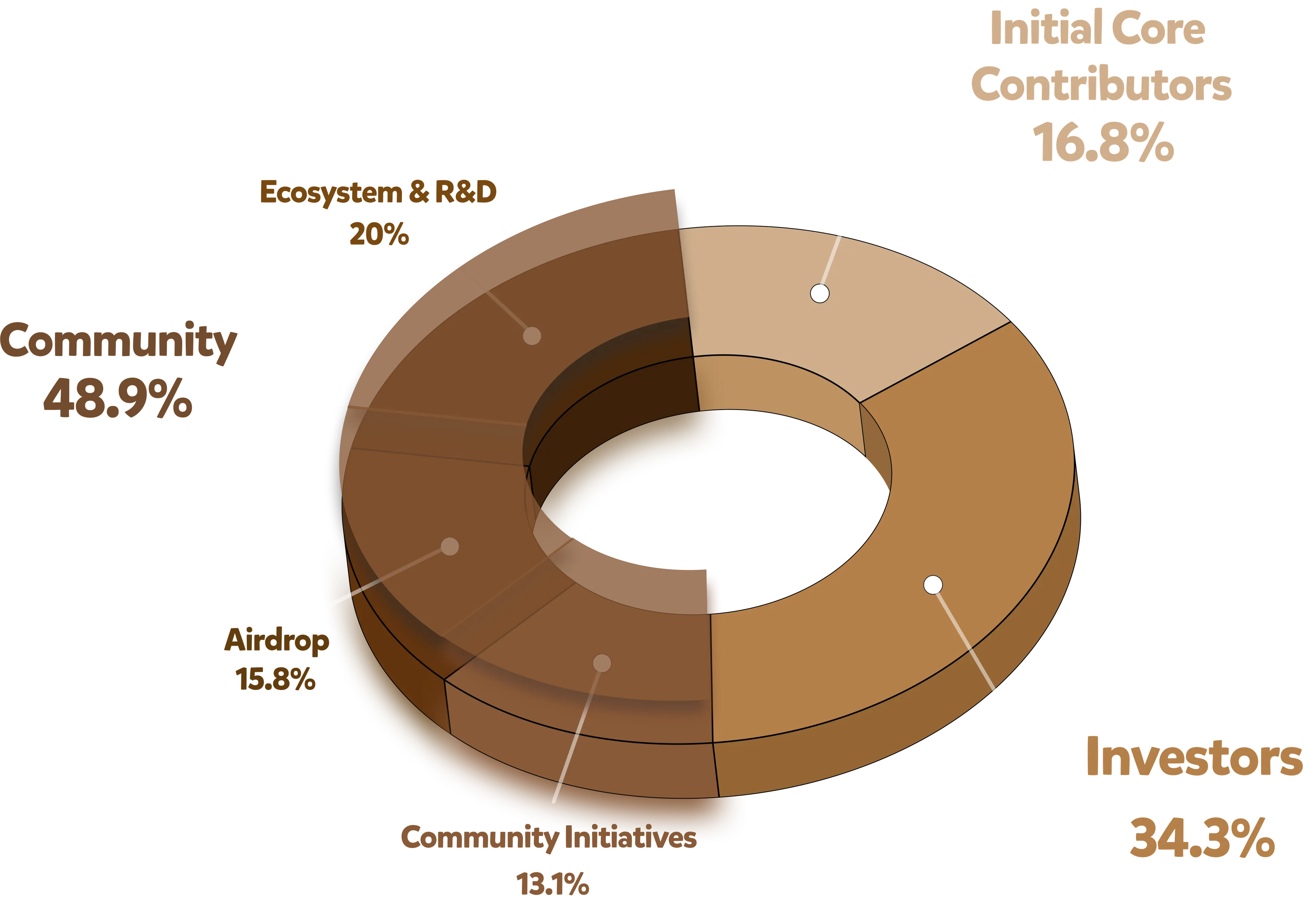Founded by three pseudonymous developers, Berachain, a layer-1 blockchain set to compete with Ethereum and Solana, will launch its mainnet on February 6, 2025.
The network utilizes a new consensus mechanism called proof-of-liquidity, which aims to better align the incentives of network participants while improving security of the chain.
Upon its launch, the new EVM-identical blockchain will try to solve the “cold start problem” that most early blockchains face, providing users and early applications with “meaningful interactions” from day one.
Here’s everything you need to know.
‘EVM-identical’
Berachain is designed as a “high performance, EVM-identical” layer-1 blockchain, meaning it aims to be identical to the Ethereum Virtual Machine at the execution layer. Therefore, any major upgrades to Ethereum mainnet, like the upcoming Pectra upgrade, can then be replicated on Berachain.
In addition to network upgrades, developers can easily deploy any apps or protocols designed for EVM-compatible chains directly on Berachain, removing barriers for developers that wish to distribute their products on new networks.
Utilizing a novel proof-of-liquidity consensus mechanism, which “borrows” from Ethereum’s proof-of-stake design, the chain launched its first testnet in January 2024.
At the time, Berachain’s v1 Artio testnet used the Cosmos SDK, but the developers soon realized that Cosmos “could not handle the amount of transactions” the testnet was receiving. That ultimately led to the creation of its own modular and customizable consensus layer, BeaconKit. Developed by Bearchain, it claims to provide multiple technical efficiencies for EVM chains while moving the network from a monolithic to a modular architecture.
Though the network aims to be nearly identical to Ethereum in execution, it varies greatly from other blockchains with its proof-of-liquidity consensus mechanism and multi-token model.
Proof-of-liquidity
Bitcoin uses the energy-intensive proof-of-work model, while Ethereum uses proof-of-stake to validate blocks, but Berachain will use a novel consensus mechanism called proof-of-liquidity.
The network calls proof-of-liquidity an “extension” of proof-of-stake that “realigns incentives between validators, applications, and users.” With this new consensus mechanism, two tokens are utilized—one for gas and network security (BERA), and another for governance and rewards (BGT).
The cycle starts with a validator staking at least 250,000 BERA tokens, similar to how an Ethereum validator requires at least 32 ETH. As validators propose blocks, they then earn rewards from Berachain, paid in BGT.
Validators next distribute that BGT to reward vaults, or allowlisted smart contracts in which users deposit eligible assets like BERA in order to earn BGT rewards. For providing liquidity to whitelisted protocols, users earn a receipt token, which can then be staked inside the rewards vaults, ultimately yielding BGT rewards.
That BGT reward can then be redelegated to the validator of the user’s choice, potentially boosting it for additional rewards.

Berachain tokens
Ultimately, Berachain has three native tokens: BERA, BGT, and HONEY, each of which serves a slightly different purpose.
BERA
BERA is the network’s native gas token, similar to how ETH is the native token for the Ethereum blockchain. In other words, to complete transactions on the Berachain network, users will need some amount of BERA tokens to pay for fees. It is also the token required for staking via Berachain validators.
BGT
BGT is non-transferable and acts as the Berchain governance and rewards token. Unlike BERA or HONEY, BGT can only be earned by engaging in “productive activities” within the network. In other words, this means that users can earn BGT only by interacting with protocols and applications that have allowlisted reward vaults.
Most often, BGT will be acquired by supplying liquidity, like with Berachain’s native decentralized exchange, BeraSwap. As the governance token, BGT can be used to vote on governance proposals individually, or users can delegate it to validators to use on their behalf.
Though BGT is non-transferable, it can be burned in a 1:1 ratio for BERA, the native gas token. However, the process only works one way, meaning that users cannot burn BERA for BGT.
HONEY
Lastly, Berachain has its own native stablecoin, or a token designed to be pegged to the value of fiat currency. In this case, HONEY is soft-pegged, or in between a fixed or floating rate peg, to the value of the U.S. dollar.
The Berachain stablecoin can be swapped into via decentralized exchanges, aka DEXs, or can be minted by depositing allowlisted collateral into an approved vault.
Berachain airdrop
After much teasing, Berachain announced tokenomics and an airdrop eligibility checker for its BERA airdrop on February 5.
The project’s native gas token will consist of 500 million BERA tokens, with an expectation of 10% annual inflation.
From that 500 million tokens, nearly 49% is slated for the community, which includes allocations for Berachain NFT holders, ecosystem research and development, and future initiatives. Of the 48.9% allotted to the community, 15.8% or 79 million BERA tokens will be airdropped to the community starting on February 6.
Contributors to the Berachain ecosystem and its investors help make up the other 50% allocated for BERA token supply.

Approximately 100 million BERA tokens will be unlocked at launch of the network’s mainnet. The other 400 million tokens are pursuant to the same vesting schedule: a one year cliff, at which point one-sixth of the tokens unlock, and then linear unlocks for the remaining share over the following 24 months.
Pre-launch initiatives
Unlike other blockchain launches, Berachain put substantial effort into gathering liquidity and creating incentives before its mainnet launches.
Most notably, the project offered two liquidity bootstrapping initiatives with its pre-launch vaults and Boyco, the project’s pre-launch liquidity platform.
Put simply, users were able to deposit eligible assets like select stablecoins and Bitcoin and Ethereum to stack rewards ahead of the network launch.
This in turn provides a generous headstart in liquidity on the network, allowing protocols, applications, and users to take advantage of those assets from launch.
“When new blockchains launch, they often struggle to attract liquidity, leaving users unable to access the depth and functionality necessary for meaningful interactions,” wrote pseudonymous Berachain team member Knower Bera. “Without meaningful interactions, these users quickly lose interest, and dapps miss out on a prime opportunity for user acquisition.”
In its pre-launch initiatives, Berachain gathered more than $3.3 billion in assets, which if ranked by total value locked would make it fifth-largest in that category, ahead of blockchains like Base and Arbitrum, according to February data from DefiLlama.
Berachain’s roots
The Berachain network first grew out of a “rebasing” NFT collection called Bong Bears, which debuted in early 2021. A popular term in computing, rebasing in this sense ensured that holders of Bong Bear NFTs earned additional Bera NFTs via airdrops with each “rebasement.”
This led to the creation of Bond Bears, Boo Bears, Baby Bears, Band Bears, and Bit Bears. One final rebase is expected to take place on Berachain mainnet.
As a rabid community formed around the Bera NFTs, Berachain slowly began to emerge, ultimately raising more than $100 million to build out its proof of liquidity blockchain.
“The NFTs came before the chain, and the NFT holders have been some of the longest-standing and most supportive members of the Berachain community, with countless holders having progressed to starting their own dapps or community initiatives within the ecosystem,” wrote the network in its tokenomics release.
The project was created by three pseudonymous founders—Smokey the Bear, Homme Bera, and Dev Bear—all of which use bear-themed monikers.
Edited by Andrew Hayward
Daily Debrief Newsletter
Start every day with the top news stories right now, plus original features, a podcast, videos and more.
https://decrypt.co/resources/what-is-berachain-proof-of-liquidity-blockchain









4wz6py